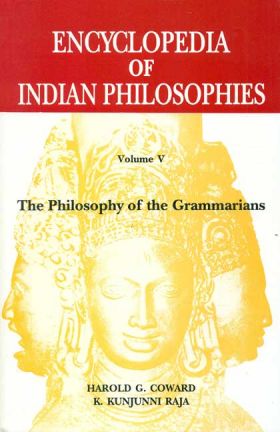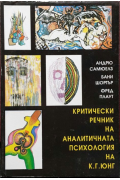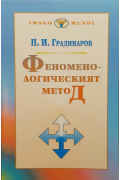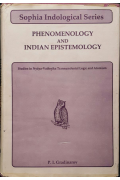This volume of the monumental reference series being prepared under the general editorship of Karl Potter provides summaries of the main works in the Grammarian tradition of Indian philosophy. Describing the functions of language on different levels, from ordinary empirical speech to the poetic intuition of the divine, the Grammarians sought to demonstrate that the correct grammatical use of language and the devotional chanting of mantras are ways of moving from lower to higher stages of knowledge and self-realization. This work gives special emphasis to the thought of Bhartrhari, the great systematizer of the Grammarian philosophy. For those unacquainted with Indian philosophy, the editors' introduction provides an explanation of the basic concepts found in the Grammarian texts.
Grammarian thought is based on the Vedas, and the writings of Panini, Patanjali, Bhartrhari, and others develop implicit Vedic ideas about language and its function. Their works combine a grammatical analysis of Sanskrit language with a philosophy that takes language as divine.
1 HISTORICAL RÉSUMÉ
(pp. 3-32)
Language has been one of the fundamental concerns of Indian philosophy and has attracted the serious attention of all thinkers from the outset. In India the study of language has never been the monopoly of the Grammarians or the Rhetoricians. AU schools of thought began their philosophical discussions from the fundamental problem of communication. The poet-philosophers of the Rg Veda were greatly concerned with the powers and limitations of language as a means of communicating their mystic, personal experiences of an ecstatic nature to their fellows and they tried to stretch the power of language by various means. They praised...
The goal of the Indian Grammarians’ philosophy, which we here call vyākaraṇa, is not mere intellectual knowledge, but direct experience of ultimate truth. Knowledge of grammar resulting in correct speech not only conveys meaning but also enables one to “see” reality. This is the philosophical meaning of the Indian term darshana, which literally means “sight”. It is this feature that sets Indian philosophy apart from modern western perspectives on language. Vyakarana not only addresses itself to the analysis of grammatical rules (though that is certainly important) or to theorizing about the way speech conveys meaning (though that too is achieved),...
Recent western thought has focused much attention on the relation between language and knowledge, but it has consistently taken a narrower perspective than vyākaranawould accept. Within the contemporary school of linguistic philosophy, language seems to be restricted to the printed word and then analyzed for a one-to-one correspondence with objective reality. While the computer-like functions of language must be highly respected, modem linguists and philosophers often seem to consign all other dimensions of the word to the unreality of a mystic’s silence.¹ Emst Cassirer has taken a much broader perspective including the natural sciences, the humanities, and all hum...
Significative power (śakti) is defined as the relation that exists between a word (śabda) and its meaning (artha). This relation is considered to be permanent and stable, so that linguistic discourse be possible. The Naiyayikas consider this significative power to be conventional, having been established by the will of God. The Grammarians consider the relation to be based on the superimposition of one on the other, creating a sort of identity, one evoking the other. The Buddhist Logicians also consider that there is a causal relation between a word and its meaning. This relation is primary denotative power and is...
Those who believe that a sentence is made up of words, each with an independent meaning of its own, will have to explain how a connected and cogent meaning is understood from the sentence. This problem has been discussed by all schools of thought in India, and various theories have evolved. Mīmāmsā, the vākyaśāstra, takes a lead in this field. Bhartrhari too has discussed various aspects of the problem and made his observations, though his final view is that the partless sentence is the unit of utterance.
Panini uses the term vākya in the general sense of an utterance...
- Coward, Harold K.
- Kunjunni Raja
- Hardcover
- Dust jacket





